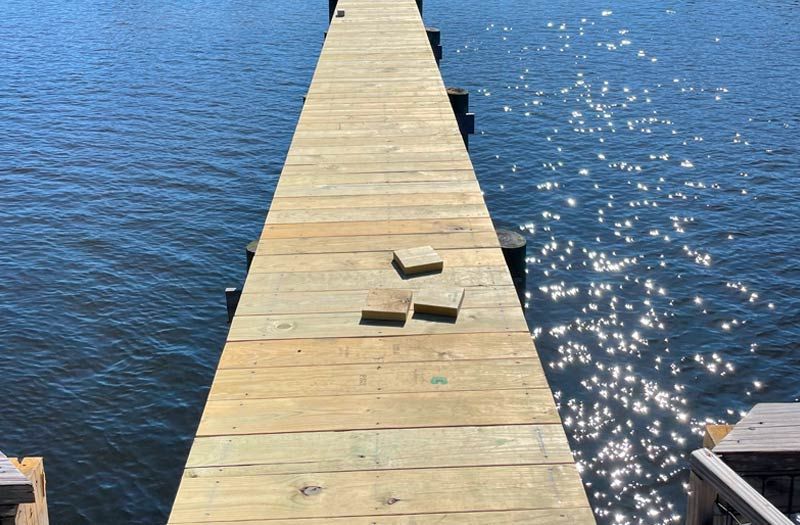Dock Board Replacement: Expert Tips for Success

Replacing dock boards is essential for maintaining a safe and aesthetically pleasing waterfront space. Knowing how to replace dock boards ensures your dock remains functional and safe for regular use.
Key Takeaway:
Essential Points About Dock Board Replacement
- Safety: Regularly replacing damaged dock boards prevents accidents and prolongs the life of your dock.
- Materials: Selecting the right materials is crucial for durability and performance.
- Process: Following a structured process ensures a successful replacement.
- Cost: Understanding potential costs helps you plan your budget effectively.
- Maintenance: Regular maintenance extends the lifespan of your dock.
Why Dock Board Replacement is Important
Regularly replacing dock boards is critical for maintaining a safe and functional dock. Over time, dock boards can become worn, warped, or damaged due to exposure to the elements and constant use. By replacing damaged boards promptly, you prevent potential accidents and uphold the structural integrity of your dock.
Signs Your Dock Boards Need Replacement
Knowing when to replace dock boards can save you from more significant repairs down the line. Here are some common signs that indicate it’s time for a replacement:
- Visible cracks and splits: These are clear signs of wear and tear.
- Warping: Boards that have bent or twisted out of shape.
- Rot and decay: Wood that is spongy or soft to the touch.
- Loose nails or screws: These can be a safety hazard.
- Discoloration: While not always a structural issue, severe discoloration can indicate underlying problems.
- When building a dock, it's essential to choose the right materials to ensure durability and safety. Here are some options:
- Aluminum Docks: These docks are lightweight, corrosion-resistant, and require minimal maintenance. They are an excellent choice for freshwater applications.
- Wooden Docks: Wooden docks offer a traditional look and feel, but they require more maintenance than other materials. They are suitable for freshwater and some saltwater applications.
- Composite Docks: These docks are made of a combination of materials, such as plastic and wood fibers. They offer the look of wood with the durability of plastic. They are suitable for both freshwater and saltwater applications.
- Plastic Docks: Plastic docks are lightweight, easy to install, and require minimal maintenance. They are suitable for both freshwater and saltwater applications.
Selecting the right materials for your replacement boards is crucial for durability and performance. The most common materials are:
- Pressure-treated wood: Cost-effective and widely available.
- Composite decking: Durable and low-maintenance.
- PVC decking: Resistant to water and UV damage.
- Aluminum: Lightweight and corrosion-resistant.
Each material has its pros and cons, so choose based on your specific needs and environmental conditions.
Step-by-Step Guide to Replacing Dock Boards
Replacing dock boards can seem daunting, but following a structured process makes it manageable.
1. Gather Your Tools and Materials
Before starting, ensure you have all necessary tools and materials. This includes:
- Replacement boards
- Hammer or drill
- Screws or nails
- Pry bar
- Measuring tape
- Safety gear (gloves, goggles)
2. Prepare the Dock
Clear the dock area of any items or debris. Inspect the current state of the dock and mark the boards that need replacement.
3. Remove the Damaged Boards
Using a pry bar, carefully remove the damaged boards. Be cautious not to damage the underlying structure.
4. Inspect the Frame
Check the dock’s frame for any signs of damage or rot. Repair or replace any compromised components before installing new boards.
5. Cut Replacement Boards to Size
Measure the area where the new boards will go and cut them to size. Ensure each board fits snugly.
6. Install the New Boards
Place the new boards onto the frame and secure them using screws or nails. Ensure each board is level and properly spaced.
7. Finish and Inspect
Once all boards are installed, inspect the work to ensure everything is secure and level. Make any necessary adjustments.
Common Tools and Their Uses
Tool Use
- Pry bar Removing old boards
- Hammer Driving nails
- Drill Securing screws
- Measuring tape Measuring board sizes
- Saw Cutting new boards to size
Cost Considerations
Understanding the costs involved in dock board replacement helps you plan your budget effectively. Here are some factors that influence the cost:
- Materials: Prices vary significantly between wood, composite, PVC, and aluminum.
- Labor: DIY projects save labor costs, but professional services ensure high-quality work.
- Extent of damage: More extensive damage requires more materials and labor.
Estimated Costs by Material
Material Average Cost per Square Foot
- Pressure-treated wood $2 - $5
- Composite decking $5 - $10
- PVC decking $8 - $12
- Aluminum $10 - $15
Tips for a Successful Dock Board Replacement
- Plan Ahead: Measure twice, cut once to avoid errors.
- Quality Materials: Invest in high-quality materials for longevity.
- Safety First: Always wear safety gear and follow safety protocols.
- Regular Maintenance: Regularly inspect and maintain your dock to prevent extensive damage.
Maintenance Tips
- Regular Inspections: Check for damage or wear periodically.
- Cleaning: Keep the dock clean to prevent algae and mildew buildup.
- Sealing: Apply sealant to wooden boards to protect against water damage.
- Tighten Fasteners: Ensure all screws and nails are secure.
Common Mistakes to Avoid
- Ignoring the Frame: Always inspect and address any frame damage before replacing boards.
- Inadequate Spacing: Proper spacing between boards is crucial for drainage and expansion.
- Using the Wrong Fasteners: Use fasteners that are suitable for your chosen material.
- Rushing the Job: Take your time to ensure everything is done correctly.
Real-Life Experiences and Best Practices
Dock board replacement is a task that many waterfront property owners have tackled successfully. Here are a few insights from real-life experiences:
- John from Charleston: "I replaced my dock boards last summer. Using composite decking made a huge difference in maintenance and durability."
- Susan from Hilton Head: "I learned the hard way that not all screws are created equal. Make sure to use stainless steel screws to avoid rust."
Key Takeaway: Ensuring Long-Term Success
Replacing dock boards is more than a maintenance task; it’s an investment in the safety and longevity of your waterfront property. By choosing the right materials, following a structured process, and performing regular maintenance, you can enjoy a safe and beautiful dock for years to come.
Final Thoughts
Regular dock board replacement is essential for maintaining a safe and functional dock. By following the steps outlined above and avoiding common mistakes, you can ensure a successful replacement project. Remember to choose the right materials, plan, and prioritize safety throughout the process.
Get in Touch
Ready to start your dock board replacement project? Contact Baker Marine Contracting today for expert advice and services. Our team is here to guide you through every step of the process, ensuring your dock remains in top condition.
Thank you for reading our comprehensive guide on dock board replacement. We hope you found it informative and helpful. For more tips and expert services, stay connected with Baker Marine Contracting.
























































